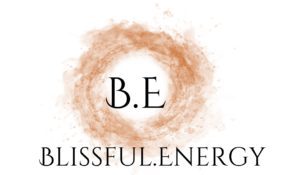
What Are Some of the Things a Swedish Massage Consists Of?
A Swedish massage is a popular and traditional type of massage that involves a combination of various techniques designed to relax muscles and improve circulation. The key components and what a Swedish massage typically consists of:
- Effleurage: This involves long, gliding strokes in the direction of blood returning to the heart. It is meant to warm up the muscles and promote relaxation.
- Petrissage: This technique involves kneading and squeezing the muscles to promote deeper relaxation and release tension. It can include techniques like wringing, rolling, and lifting.
- Friction: This involves the use of circular pressure applied with the fingers or palms. It helps to break down muscle knots and adhesions.
- Tapotement: Also known as percussion, this technique involves rhythmic tapping or pounding movements. It can stimulate the muscles and promote blood circulation.
- Vibration: This involves the use of rhythmic shaking or vibrating movements to release tension and promote relaxation.
- Stretching: Some therapists may include gentle stretching of the limbs to improve flexibility and range of motion.
The pressure applied during a Swedish massage can vary from light to firm, depending on the client’s preferences and the therapist’s assessment of the individual’s muscle tension. The goal of a Swedish massage is to promote relaxation, ease muscle tension, and improve overall circulation and well-being. It is often considered a gentle and soothing massage style, making it suitable for those who are new to massage or prefer a less intense experience.
Swedish Massage Techniques
Swedish massage is a renowned therapeutic technique that incorporates a variety of gentle yet effective movements to promote relaxation and alleviate muscle tension. One of the fundamental techniques used in Swedish massage is effleurage, which consists of long, gliding strokes along the muscles. This serves to warm up the body and create a sense of overall relaxation. Following effleurage, therapists often transition to petrissage, a kneading and squeezing technique designed to release tension and enhance circulation. The therapist’s hands, fingers, or thumbs perform various kneading movements, such as lifting, rolling, and squeezing, contributing to the soothing and therapeutic nature of the massage.
Friction is another key technique in Swedish massage, involving circular pressure applied with the fingers, thumbs, or palms. This technique is particularly effective in breaking down muscle knots and adhesions, facilitating increased blood flow to the targeted areas. For an invigorating touch, therapists may incorporate tapotement, or percussion, employing rhythmic tapping or pounding movements. Vibration, another technique used, introduces a gentle shaking or vibrating motion, often applied with the fingertips or palms, adding a rhythmic and soothing element to the massage.
In addition to these primary Swedish massage techniques, Swedish massage may include stretching movements to enhance flexibility and joint movements to alleviate stiffness. Therapists may also employ cross-fiber friction to target specific areas or trigger point therapy to address localized tension. While Swedish massage is generally associated with lighter to moderate pressure, therapists may incorporate moderate deep tissue techniques when necessary, providing a comprehensive and customizable experience for the client. Communication with the massage therapist is crucial to ensuring the session aligns with individual preferences and addresses specific areas of concern, resulting in a truly personalized and beneficial massage experience.
Difference Between Swedish and Deep Tissue Massage
Swedish massage and deep tissue massage are both popular forms of therapeutic massage, but they differ in terms of their techniques, pressure, and intended outcomes. Here are the key differences between Swedish and deep tissue massage:
Techniques:
Swedish Massage: This type of massage uses a combination of long, flowing strokes (effleurage), kneading (petrissage), circular motions (friction), tapping (tapotement), and sometimes vibration. The techniques are generally gentler and focus on promoting relaxation and improving circulation.
Deep Tissue Massage: Deep tissue massage, as the name suggests, involves applying more intense pressure and targeting the deeper layers of muscles and connective tissue. The therapist may use techniques like deep finger pressure, slow strokes, and focused kneading to address specific areas of tension or pain.
Pressure:
Swedish Massage: The pressure in Swedish massage is generally lighter to moderate. It’s designed to be soothing and relaxing rather than intense. The therapist adjusts the pressure based on the client’s preferences.
Deep Tissue Massage: Deep tissue massage involves firm to deep pressure, often reaching the deeper layers of muscles and tissues. The therapist may communicate with the client to ensure the pressure is within their comfort level.
Goals:
Swedish Massage: The primary goal of Swedish massage is to promote relaxation, relieve muscle tension, and improve circulation. It is a more general and overall body relaxation-oriented massage.
Deep Tissue Massage: The focus of deep tissue massage is on addressing specific musculoskeletal issues, such as chronic muscle pain, injury rehabilitation, or limited mobility. It aims to release muscle knots, adhesions, and areas of chronic tension.
Suitability:
Swedish Massage: Ideal for individuals seeking a general sense of relaxation, stress relief, and improved circulation. It’s a good option for those new to massage or sensitive to intense pressure.
Deep Tissue Massage: Suitable for individuals with chronic muscle pain, specific injuries, or those who prefer a more intense massage experience. It may be less suitable for those with a low pain tolerance or individuals looking for a purely relaxing experience.
Ultimately, the choice between Swedish and deep tissue massage depends on your individual preferences, health goals, and the specific issues you want to address during the massage. It’s advisable to communicate openly with your massage therapist to ensure the session meets your expectations and comfort level.
The Benefits of a Swedish Massage
Swedish massage, with its emphasis on relaxation and gentle muscle manipulation, offers a variety of benefits that contribute to both physical and mental well-being. Here are some of the key advantages of Swedish massage:
- Stress Relief: Swedish massage is renowned for its stress-reducing properties. The gentle strokes and kneading motions help to trigger the release of endorphins, promoting a sense of relaxation and reducing stress hormones.
- Muscle Relaxation: The combination of effleurage and petrissage techniques in Swedish massage helps to relax muscle tension. This is particularly beneficial for individuals with tight or sore muscles, promoting a feeling of overall relaxation and ease.
- Improved Circulation: The rhythmic strokes used in Swedish massage contribute to improved blood circulation. Enhanced blood flow can benefit the body by increasing oxygen and nutrient delivery to tissues and aiding in the removal of metabolic waste products.
- Enhanced Flexibility: The stretching component of Swedish massage helps to improve joint flexibility and range of motion. This can be especially beneficial for individuals with stiffness or limited mobility.
- Toxin Elimination: Increased circulation and lymphatic drainage during a Swedish massage contribute to the elimination of toxins from the body. This can have a positive impact on overall health and well-being.
- Improved Sleep Quality: Many individuals experience improved sleep quality after a Swedish massage. The relaxation induced by the massage promotes better sleep patterns and can be beneficial for those struggling with insomnia or disrupted sleep.
- Mood Enhancement: The release of endorphins during a Swedish massage not only reduces stress but also contributes to an uplifted mood. This can be particularly beneficial for individuals dealing with mild depression or anxiety.
- Pain Relief: Swedish massage can provide relief from minor aches and pains. The techniques used in the massage help to alleviate muscle soreness and tension, making it a valuable component of pain management.
- Boosted Immune System: Regular Swedish massage may have a positive impact on the immune system. The stress reduction and improved circulation associated with the massage can contribute to overall immune system function.
- Mind-Body Connection: Beyond the physical benefits, Swedish massage encourages a heightened awareness of the mind-body connection. The focused attention on the body during the massage promotes mindfulness and relaxation.
It’s important to note that individual experiences may vary, and while Swedish massage offers numerous benefits, it may not be suitable for everyone. Individuals with certain medical conditions or those with specific concerns should consult with a healthcare professional before undergoing any massage therapy.
Thai Massage vs a Swedish Massage: Differences Between The Two
Thai massage and Swedish massage are two distinct types of therapeutic massage, each with its own techniques, origins, and purposes. Here’s a comparison between Thai massage and Swedish massage:
Origin:
Swedish Massage: Originating in Sweden, this massage technique was developed by Per Henrik Ling in the early 19th century. It is one of the most widely practiced massage styles in the Western world.
Thai Massage: Thai massage, also known as Nuad Boran, has its roots in ancient Thai medicine and is influenced by traditional Chinese medicine and yoga. It has been practiced for over 2,500 years.
Techniques:
Swedish Massage: Swedish massage involves a combination of effleurage (long strokes), petrissage (kneading), friction, tapotement (rhythmic tapping), and vibration. The pressure can range from light to firm.
Thai Massage: Thai massage is a dynamic and interactive form of bodywork that includes assisted stretching, joint mobilization, and acupressure. The recipient is fully clothed, and the therapist uses their hands, knees, legs, and feet to move the client into various yoga-like stretches.
Clothing:
Swedish Massage: Typically performed with the client undressed and covered with a sheet or towel. The therapist exposes only the part of the body being worked on at a given time.
Thai Massage: Clients remain fully clothed in loose, comfortable attire during a Thai massage. This makes it more accessible for individuals who may be uncomfortable with disrobing.
Setting:
Swedish Massage: Often performed in a quiet, spa-like environment, with dim lighting and soothing music to enhance relaxation.
Thai Massage: Thai massage is commonly performed on a mat on the floor, and the setting can be more dynamic. It may take place in a spa, wellness center, or even in open-air environments.
Purpose:
Swedish Massage: Primarily focused on relaxation, stress reduction, and improving circulation. It’s a great choice for those seeking a gentle and soothing massage experience.
Thai Massage: Aims to balance energy, improve flexibility, and address musculoskeletal issues through stretching and pressure point techniques. It is often seen as a more active and invigorating form of massage.
Pressure:
Swedish Massage: The pressure in Swedish massage can be adjusted to the client’s preference, ranging from light to firm.
Thai Massage: Involves firm pressure, but the therapist can adapt to the client’s comfort level. The pressure is often more dynamic due to the stretching and compressions involved.
Swedish massage is a classic, Western-style massage that emphasizes relaxation and muscle tension relief, while Thai massage is an ancient Eastern practice that incorporates stretching and acupressure to promote flexibility, energy balance, and overall well-being. The choice between the two depends on individual preferences, goals, and comfort levels.
Pricing and Cost of a Swedish Massage
It’s advisable to check with individual spas or massage therapists in your area to get accurate and up-to-date pricing information based on your specific location and preferences. Many spas also offer discounted rates for package deals or memberships, so it’s worth exploring different options to find the best value for your needs.
If you’re considering a massage that not only eases your mind but also rejuvenates your body, a Swedish massage might be the perfect choice. Trust in the hands of a skilled therapist, and let the soothing rhythm of Swedish massage guide you into a realm of tranquility and well-being.
Written by Shifted SEO: SEO Company Melbourne, FL
